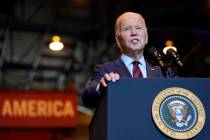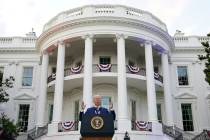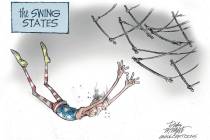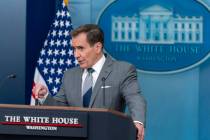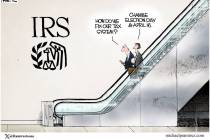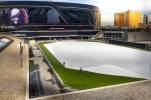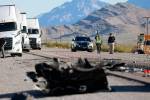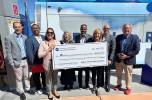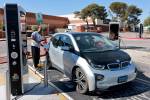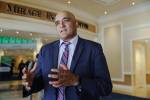The lure of Interstate 11
The digital prophets love to talk about people all over the world being connected to one another without leaving the comforts of their recliners, laptops perched on their thighs. This idyllic vision of virtual connectedness suggests that the need to move from one place to another to accomplish various tasks is a thing of the analog past.
Of course, this is fantasy on most levels of human existence. Consider online shopping. My wife's new favorite company is Zappos.com, the web retailer based in Henderson. While it's true that she is able to shop for shoes while seated in front of our home computer, that's far from the end of the story. Once the credit card information is entered and the purchase button is clicked, the next phase of the process begins, and it doesn't involve magically squeezing the shoes through a fiber optic line.
The shoes must be shipped to Las Vegas from wherever they're being stored. They likely start their journey on a truck, transfer to an airplane, then return to a truck to be carried to our front porch. But there's more. Since my wife can't try on the shoes before she buys them, chances are they don't fit just right. So the ill-fitting shoes are placed back in the Zappos box and dropped off at the nearest UPS Store.
This cycle of transportation goes on endlessly. Shoes are flying all over this country as customers seek just the right pair for their feet. And it's not just shoes, of course, it's the large majority of products we buy and sell.
Transportation of goods, services and people is a huge piece of the world marketplace, and it's not going away no matter how many promises the digital gurus make. Quick and efficient transportation is an essential element of a vibrant economy.
Las Vegas has invested heavily in and benefited greatly from improvements in air travel. But it has lagged in the development of highways and rail lines linking to the region's other population centers. The most egregious example is the hodgepodge surface route between Las Vegas and Phoenix.
When I think about going somewhere in the region, my orientation is to the west and southwest. Los Angeles, Orange County, San Diego -- these are the regional centers that come to mind. Phoenix never makes the list. No offense to Phoenix. I've been there several times, and it's a fine city. But it's far from a straight highway shot from Las Vegas to Phoenix. It's a meandering 300-mile trip, and it takes longer than it should.
You'd think Las Vegas and Phoenix would be natural bosom buddies, joined at the hip economically and culturally. You'd think Las Vegans would be big fans of the Cardinals, Suns and Diamondbacks. But mostly they aren't. The absence of an efficient north-south transportation corridor is a primary reason.
There's a movement to change this, and it comes under the general heading of Interstate 11. It doesn't exist yet, but the idea is gaining momentum in Arizona and Nevada. One step in the right direction will debut in early November: the $114 million Hoover Dam bypass bridge spanning the Colorado River. The Mike O'Callaghan-Pat Tillman Memorial Bridge will save truckers from having to endure long detours to avoid the dam. Commuters and tourists will save time as well, avoiding the Homeland Security checkpoint and the winding, narrow highway crossing the dam.
The bridge will represent a big improvement to the Las Vegas-Phoenix corridor, but it's only one piece of the puzzle. Long stretches of roadway still need to be expanded to four-lane divided highway, and a $500 million highway bypassing Boulder City is needed not only to eliminate another traffic slowdown but to preserve the tranquility of that small community.
The full vision for I-11 is far more ambitious than anything I have described so far. It would dramatically improve the transportation corridor from Mexico all the way to Canada over the next 40 years or so. But much can be done sooner.
While money is the primary challenge, a possible answer surfaced just this week when President Obama proposed a job-creating initiative focused on upgrading the nation's roads, runways and rail lines. Under the $350 billion, six-year plan, Obama would create an "infrastructure bank," with a panel of experts deciding which projects to fund based on merit rather than political influence.
Improving the Las Vegas-Phoenix corridor surely would meet the merit test. Construction projects would create jobs in two of the states hit hardest by the Great Recession, and the end product would generate new economic activity and diversification in two of the Southwest's largest hubs.
The digital transmission of messages by wire and through the air is an increasingly important part of the modern world. But the time-honored modes of transporting freight and people remain the bedrock of the economy.
With the exception of tourism, Las Vegas remains relatively isolated from the jetstreams of global commerce. Improving the transportation corridor to Phoenix, as well as to Southern California, could transform the Las Vegas economy in ways we can only imagine today.
Geoff Schumacher (gschumacher@reviewjournal.com) is the Review-Journal's director of community publications. His column appears Friday.








